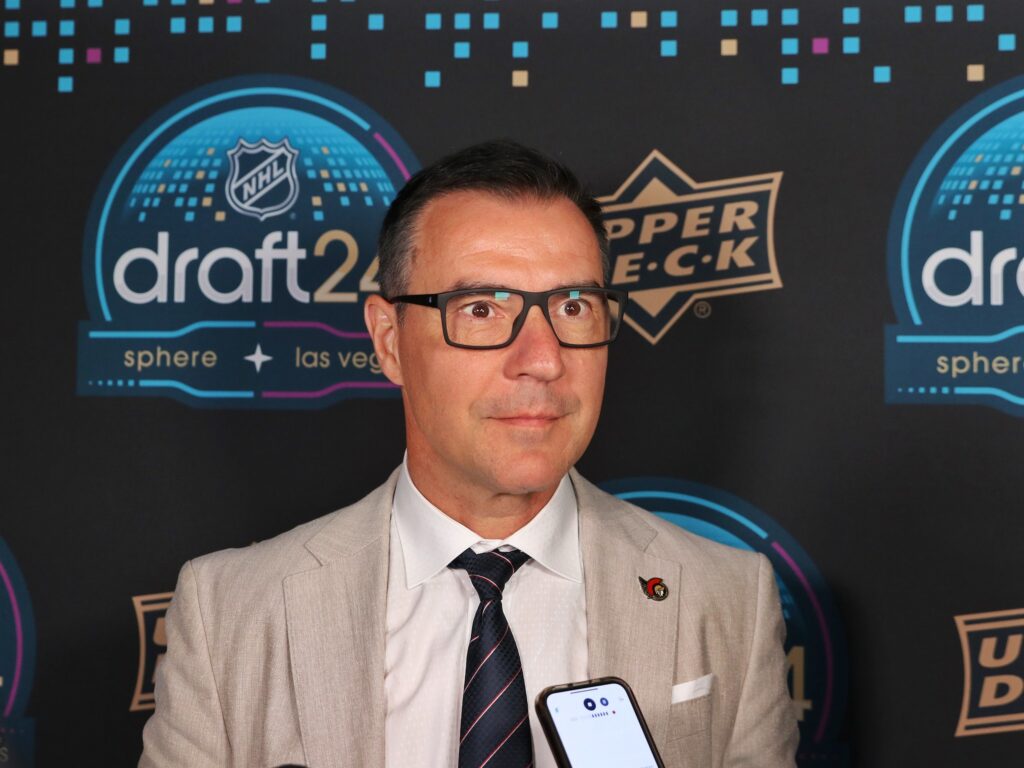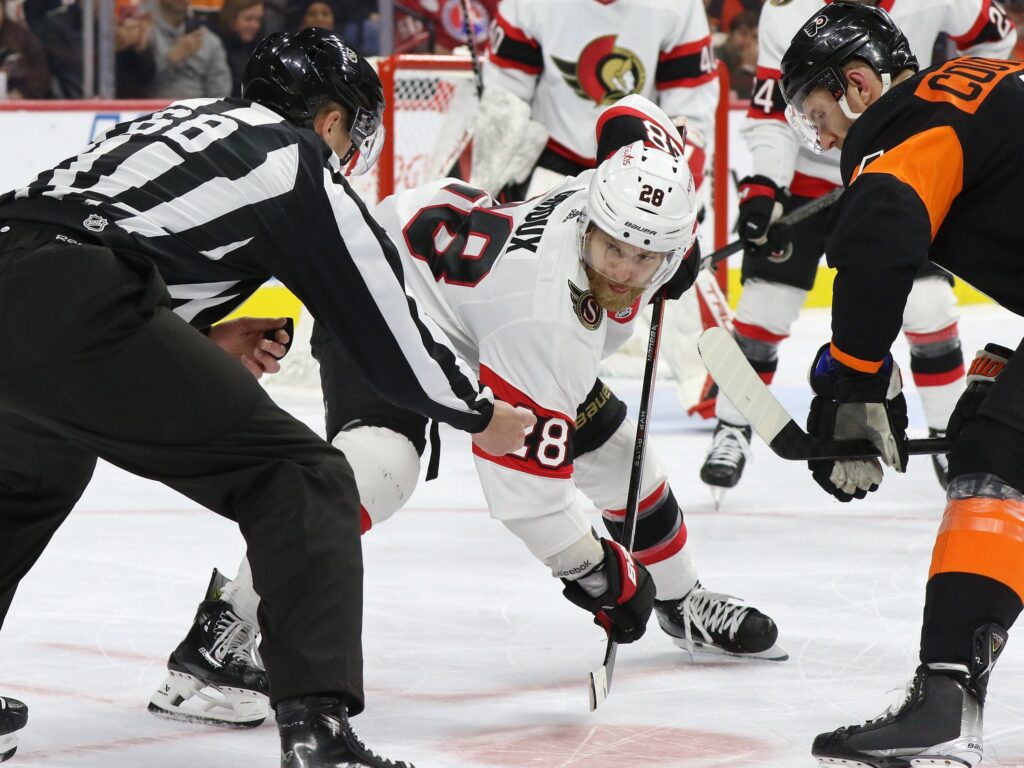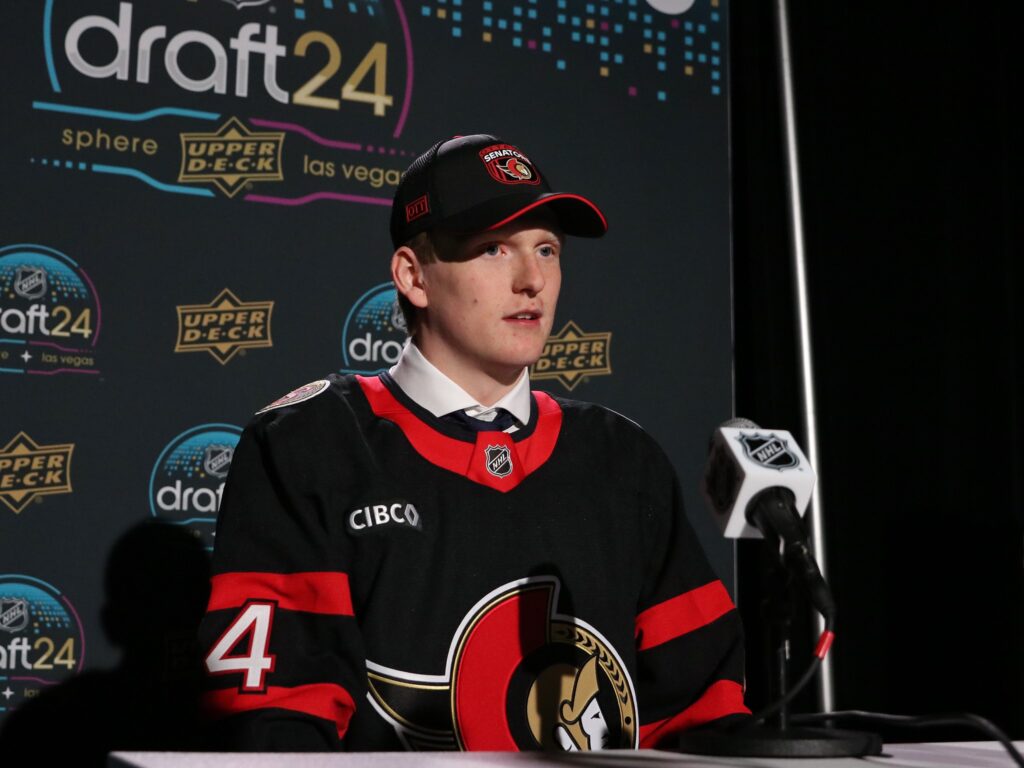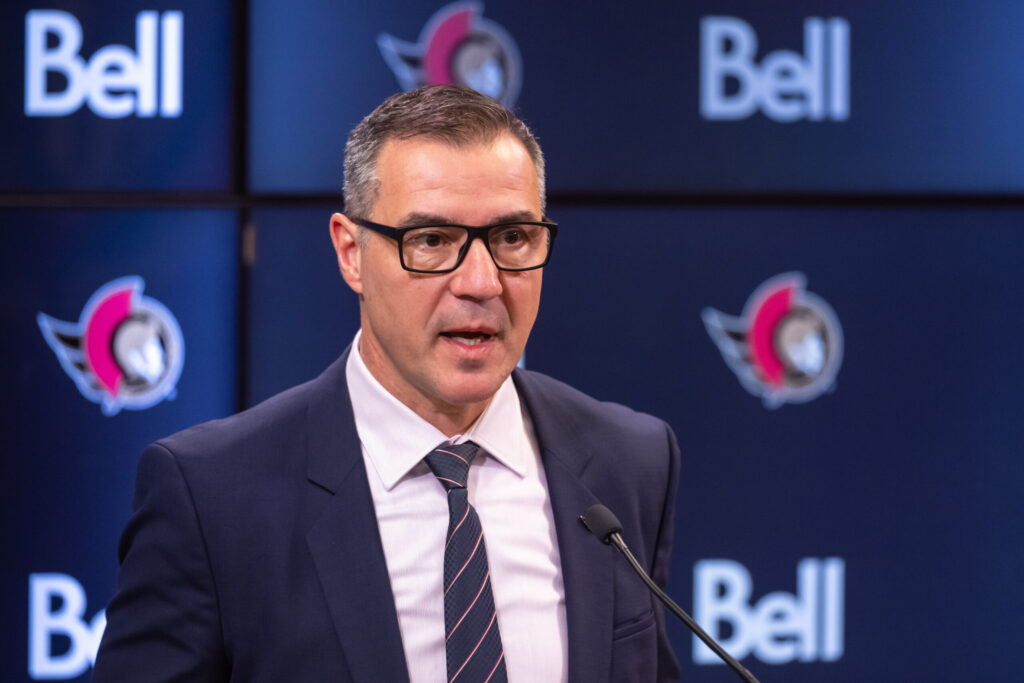In the frantic, ego-driven arms race that is the NHL off-season, silence can be deafening. While general managers across the league were chasing headlines, throwing astronomical term and dollars at the shiniest new free agents, Ottawa’s Steve Staios chose a different path. He chose the quiet path. For a fanbase starved of sustained success and clamoring for a marquee acquisition, this summer of restraint felt, to some, like a missed opportunity. But a closer look at the strategy reveals not inaction, but a calculated, confident bet—a bet on the core that finally brought playoff hockey back to the Canadian Tire Centre.
Also on the EDGE – Six Storylines That Will Define the Ottawa Senators’ 2025-26 Training Camp
Staios’s off-season was not about winning the July press conference. It was about building the foundation for winning in May. He resisted the siren’s song of quick fixes and fan-driven pressure, making a deliberate choice to prioritize internal growth over a blockbuster acquisition. This wasn’t negligence; it was a clear-eyed assessment of where the Senators are on their competitive timeline. This is a team whose identity is still being forged in the fire of experience, and Staios has decided the most important additions won’t be found on the open market, but within the Senators’ own dressing room.
Resisting the Siren’s Song
Every GM feels the heat. When names like Brock Boeser are floated in the rumour mill, the pressure from the fanbase and media to “do something” can be immense. It takes a steady hand and a firm belief in one’s long-term vision to resist that pull. Staios demonstrated exactly that. He “rightly judged that his team’s time has not yet come” for an all-in push for the Stanley Cup. Making a franchise-altering trade or signing a max-term UFA is the move a team makes when they believe they are one piece away. Staios looked at his roster and concluded, correctly, that the next significant step forward wasn’t one player away; it was one year of collective growth away.

His philosophy is clear: support, don’t supplant. “We’re mindful of this group and their growth and their development, and I think I can’t emphasize that enough,” Staios stated. “The manager is there to support it and to make sure that you can add to where you need to add. The emphasis is on this group.” This is a direct message to his young stars, Brady Tkachuk and Tim Stutzle chief among them. It’s a vote of confidence that says, “This is your team to lead. We will give you the tools and the support, but the onus is on you to take the next step.” In an era of constant player movement, that kind of organizational belief is a powerful asset.
The Taste of April Hockey
To understand Staios’s patience, one must first understand the significance of last season. Breaking a seven-year playoff drought was more than just a statistical achievement; it was an invaluable education. For a young core that had known nothing but long summers, that first-round series against the Maple Leafs provided a crucial “learning curve” and a tangible taste of what they’ve been fighting for. Getting there is one thing; feeling the intensity, the pressure, and ultimately, the sting of defeat is another.
That experience is the fuel for the internal development Staios is banking on. You can’t buy it in free agency. You can’t acquire it at the trade deadline. It has to be earned. Tim Stutzle’s reflection on the loss speaks volumes about the group’s mindset. “We want to feel that every year,” the young forward said, acknowledging that the bitterness of being eliminated by a rival serves as a powerful motivator. That shared experience, that collective hunger, is the “unquantifiable” element Staios believes will translate into quantifiable results this season. The optimism isn’t just based on hope; it’s based on the evidence of their strong finish post-trade deadline and their performance under the bright lights of the postseason.
Tinkering, Not Tearing Down
While the off-season was defined by what Staios didn’t do, it’s a mistake to say he did nothing. His approach was surgical. Instead of a roster overhaul, he performed some “tinkering around the edges,” with each move designed to insulate and support his young leaders. The theme was clear: add experience, character, and Stanley Cup pedigree.

Bringing back alternate captain Claude Giroux on a one-year extension at a reduced salary sends a powerful message about belief and commitment from the team’s most respected veteran. Re-signing Nick Cousins and adding Lars Eller reinforces the strategy. Eller isn’t a “flashy high-end talent,” but he brings 1,116 games of NHL experience and a 2018 Stanley Cup ring. He, along with Michael Amadio and David Perron, provides the kind of championship know-how that is indispensable for a young team learning how to win. On the blue line, acquiring Jordan Spence for draft picks was a shrewd move to create three solid defensive pairings without subtracting from the existing core.
These weren’t moves to grab headlines. They were moves to win hockey games. Staios, working with limited assets and cap space, managed to improve the team, “at least on paper,” by adding and retaining veterans who understand the daily grind and the monumental effort required to succeed in the playoffs.
The Clock is Ticking on “Potential”
The vote of confidence from management now shifts the spotlight squarely onto the players. The narrative is no longer about the future; it’s about the present. As Stutzle candidly admitted, the grace period for their youth is over. “Obviously, we’re a young team, but we can’t talk about that every year, (about) how young we are. We just got to take steps forward.”
While the Senators are still the league’s 11th-youngest team, their key players are entering the phase of their careers where potential must translate into consistent, dominant performance. The “biological clocks” of the core are ticking into their primes. Staios’s calculation is that this group, having now tasted the postseason, “won’t regress.” The expectation is that “the next step is in our room.”
To foster this growth, Staios is cranking up the internal pressure. He has promised a “competitive training camp” where roster spots are earned, not given. Players who “come in and push” and “help the Ottawa Senators win” will play. This environment opens the door for prospects like defenceman Carter Yakemchuk to potentially “stamp his imprint on the team sooner than expected,” further underscoring the organization’s commitment to promoting from within.

The Verdict is in the Victories
In the end, Steve Staios has made his bet. It’s a “big bet on [the] young core.” He’s pushing all his chips to the center of the table, trusting that the leadership of Tkachuk, the dynamic skill of Stutzle, and the collective growth of a battle-tested young roster are the team’s most valuable assets. Buzzwords like “process” and “internal growth” are easy to mock when a team is losing, but Staios is operating with the conviction that for this specific hockey club, at this specific moment, they are the only words that matter.
This quiet off-season was a statement of intent. It declared that the time for major external reinforcements is not now. The time for the existing core to seize control of its own destiny is. The foundation has been laid, the support structure is in place, and the lessons have been learned. Now, the real test begins.
Created with the aid of Gemini AI
